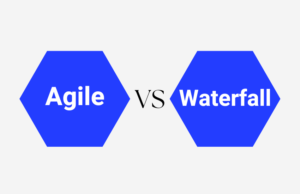What exactly are User Interface and User Experience design? And why do we care about it? What is the difference between UI and UX?
What are UI and UX designing?
In short, user interface design is how a website looks and feels. It includes everything from colors, fonts, images, layout, navigation, etc. This is also known as front-end design because it deals with the visual aspects of a website.
User experience design is how a website works. It focuses on usability, functionality, and content. A great example would be Amazon.com vs Walmart.com. They both sell products online, but Amazon has a very clean, simple, intuitive user interface while Walmart doesn’t.
The purpose of both UX and UI is to create a smooth and comfortable entire user journey whenever they visit your web or mobile app.
I’m going to explain these concepts in detail and help you understand what each means and how they differ.
Difference between UI and UX design
User Experience (UX) is the process of designing an interface that makes users comfortable while accomplishing tasks. The user Interface (UI) is the visible graphical representation of the user experience.
In simple terms, UX is about the design of the app and its functionality; whereas UI is concerned with the look and feel of the application.
While both UI and UX are important aspects of mobile apps, UI designers focus mainly on visual elements such as colors, fonts, images, and shapes. On the other hand, UX designers concentrate on how well the app works and how intuitively it responds to the needs of the user.
Both UI and UX play vital roles in creating the perfect mobile or web app. However, the two fields differ significantly in scope and approach.
Here’s a quick comparison between UI and UX:
- A UI designer focuses on how the app looks and feels.
- A UX designer concentrates on the functionalities of the app.
- While UI designers typically work alone, UX designers usually collaborate with developers.
- UX designers often work directly with users.
- UI designers are responsible for defining the overall look and feel of the app.
- On the other hand, UX design involves extensive research, testing, and analysis before the actual development begins.
- UX designers tend to spend more time analyzing the problem domain and coming up with solutions.
- They also conduct usability tests and interviews with potential customers to understand their requirements.
- After this, UX designers develop wireframes and prototypes using mockups and prototyping software.
- Once these designs are approved by stakeholders, UX designers use these to build user flows, flowcharts, and diagrams.
- From there, they refine the designs until they meet the client’s expectations.
- Finally, they implement the designs in the codebase and test them thoroughly.
- Thus, UI and UX designers work independently but together to deliver high-quality products.
- However, the difference lies in the fact that UX designers are primarily concerned with the function of the app and how it functions.
- Whereas UI designers focus on the aesthetics of the app and how efficiently it performs.
User Experience and Today’s World
How many times have you heard a friend say something like this?
“I wish my site was better designed.”
Or maybe you’re thinking, “My site looks fine!”
If you’re reading this article, chances are you care about UX (User Experience design). After all, if you were designing websites for a living, wouldn’t you want to create sites that are as intuitive and user-friendly as possible?
Well, here’s the truth.
UX design matters. But it’s only half the story. The other half is the digital world.
Let me explain.
Digital technology is changing at warp speed. We live in a fast-paced world where we constantly interact with our devices. Our phones, tablets, laptops, smartwatches, and more are always connected to the internet. And the web itself is evolving rapidly.
This means there are constant changes in the way people use the internet. If you want to stay relevant online, you must adapt to these changes. Otherwise, you risk being left behind.
For example, let’s look at mobile apps. Mobile apps used to be a novelty. Now, millions of people use them every day. Why? Because they’re convenient and easy to use.
Now consider e-commerce. A decade ago, most people shopped online via desktop computers. Today, almost everyone shops online via smartphones and tablets. This change is happening because smartphones and tablets are now powerful enough to handle complex tasks such as shopping.
And then there are social media. Social media is one of the fastest-growing areas of the digital world. People spend hours each week interacting with friends and family through Facebook, Twitter, Instagram, Snapchat, etc.
These are just three examples of rapid technological advancements. There are countless others.
With all this change, it’s important to understand how users behave in order to create effective and interactive User Interfaces and User experience UX designs.
User Interface and Today’s World
We live in a visual age where we spend most of our time looking at screens. So how do you ensure your site looks good on mobile devices?
While web designers may think that responsive design is enough, it doesn’t always work. There are a number of factors that affect whether or not a website works well on mobile devices.
One of the biggest issues is the lack of interaction design of the User interface. If your website lacks a clear navigation system, users won’t know what to click on. The end user’s interaction will get frustrated and they will leave.
Another issue is the lack of consistency between desktop and mobile versions. Mobile sites should look similar to their desktop counterparts, so if you’ve got a different font size on each version, users will notice.
Finally, there’s the matter of speed. Users expect fast loading times, especially when accessing information from their phones. Slow loading speeds mean fewer conversions, and that means fewer sales.
Whenever a user visits your website and faces the above-mentioned issue it directly blames the Product design, Graphical user interface.
After all, who wants to spend hours navigating through a complicated website that looks like it was designed by a caveman? That’s why the design process of today’s world web is the most important thinking that one UI designer must have.
Before creating any web app or mobile app the UI and UX designers must have the research following 3 aspects;
1. The purpose of the website
2. The target audience
3. The content strategy
1. Purpose – Why does your website exist?
Every website exists for a specific purpose.
For example, Google exists to help people to provide information and distribute information globally and Amazon’s purpose is to sell products.
This means that the primary purpose of the website is very important to know.
2. Target Audience – Who is your website intended for?
Who is your website intended to serve?
Is your website aimed at moms? Or dads? Or both? Is your website targeted toward vegetarians? Vegans? Meat lovers?
Or maybe you want to reach out to everyone.
Whatever your goals are, be clear about them before you begin creating your website or mobile app.
3. Content Strategy – What kind of content should you include on your website?
Should you include recipes? Should you include product reviews? Should you include videos?
Once you decide which types of content you want to feature on your website, you can begin planning the structure of your website.
UX design and UI design are Two Hands together
User Experience (UX) and User Interface (UI) design are closely related disciplines. Both deal with user needs and expectations.
Both focus on understanding users’ goals and tasks and designing solutions that meet those goals. Both involve research and prototyping and both are concerned with usability and accessibility.
However, while UX designers tend to focus on the overall user experience, including visual aesthetics, navigation flow, and content organization, UI designers tend to focus on individual elements such as buttons, icons, menus, text boxes, labels, etc.
While UX design tends to be more holistic, UI design tends to be more focused. While UX design seeks to solve problems, UI design focuses on solving specific problems. While UX design aims to provide an optimal user experience, UI design focuses on providing an optimal interface.
In short, UX design is about creating great experiences. UI design is about creating great interfaces.
Now that you understand the difference between UX and UI design, here are three ways you can apply UX principles to your UI design projects to smooth the user journey on your app.
1. Create a clear hierarchy among important information.
2. Make your button stand out.
3. Give your button feedback.
For example, if you’re working on a login form, consider these questions:
• Does your button stand out enough to draw attention?
• How does the color of the button relate to its function?
• Can the button be easily identified by touch, sight, or sound?
• What happens when the button is pressed?
• Does the button offer positive reinforcement?
• Does the layout guide users through the process?
• Does the page feel too cluttered?
• Does the font size match the importance of the message?
• Does the copy emphasize the benefits of using the site?
• Does the site use a consistent look and feel throughout?
• Does the website follow best practices?
• Does the design adhere to web standards?
• Does the information fit within the screen?
• Are there any unnecessary distractions?
• Is the home page aesthetically pleasing?
• Do the links match the purpose of the page?
• Does the menu allow users to navigate quickly and efficiently?
• Does the link text clearly communicate the destination URL?
• Does the navigation bar contain useful links?
• Does the search box include relevant terms?
• Does the input field prompt users to add additional keywords?
• Does the form validate the data entered?
• Does the validation error message tell users what went wrong?
• Does the error message suggest possible fixes?
• Does the submit button require extra effort to click?
• Are there hidden fields?
• Does the data entry area show empty text fields?
• Does every element on the page serve a purpose?
• Does the text read like prose rather than bullet points?
• Does the language reflect the audience?
• Does the writing style appeal to readers?
• Does the document structure make sense?
• Does the order of paragraphs and headings match the logical progression of ideas?
• Does the file name correspond to the type of document being created?
• Does the title accurately describe what the document contains?
• Does the table of contents list the most important sections?
Wireframing and Prototyping
Wireframes and prototypes are two different types of visual designs used for web design. Wireframes are static mockups that illustrate the layout of a webpage while prototypes are interactive versions that allow designers to interact with the page. Both are useful for communicating ideas and concepts to other team members and stakeholders.
The main difference between wireframes and prototypes is that wireframes are typically created in Photoshop, whereas prototypes are built directly in HTML5 Canvas. With wireframes, you can add text boxes, dropdowns, and other elements to the mockups to communicate specific details.
While both wireframes and prototypes are helpful tools for communicating ideas, neither is perfect. Depending on the project, you may prefer one over the other.
For example, if you’re working on a large-scale redesign, wireframing might be ideal since it allows you to focus on the overall flow of the page rather than individual elements. However, if you’re building a small tweak to an existing design, then you may prefer to prototype instead.
In addition to wireframes and prototypes being used for designing websites and apps, they’re also commonly used during development to test user flows and interactions. For example, if you’re developing a shopping cart feature, you could create a prototype version of the page to determine whether shoppers would understand how to navigate through the checkout process.
While wireframes and prototypes aren’t always necessary, they can provide valuable insight into the design direction of your project. As long as they’re done correctly, they can help you avoid costly mistakes down the road.
They both work well for certain types of projects. And they both have limitations.
Prototyping is great for creating an initial version of something. It’s also useful for testing ideas before committing to full development.
Wireframes are great for refining designs. They can be used to communicate concepts, show visual hierarchy, and illustrate flow.
Both wireframes and prototypes are powerful communication tools. But they come with tradeoffs.
Prototypes are fast. They allow you to test ideas quickly and iterate faster. But they limit your options.
Wireframes are slow. They require careful planning and design work. But they provide flexibility.
Neither works perfectly for every project. So which tool is most appropriate for your needs?
Here are three questions to ask yourself:
1) How important is speed?
2) What type of project am I working on? (e.g., product launch, website redesign, etc.)
3) Where does the client fit on the spectrum between prototype and wireframe?
Here’s a quick summary of the pros and cons of each approach.
Fast. Prototypes are ideal for rapid iteration. They allow you to explore many possible directions without wasting too much time.
Limited. Prototypes are good for exploring ideas but they often force you to compromise on the details.
Flexible. Wireframes are ideal for designing complex systems. They allow you to focus on the big picture while leaving plenty of room for refinement.
Slow. Wireframes require careful planning and design. They can be difficult to update after changes have occurred.
Detailed. Wireframes are great for refining ideas. They allow you to communicate specific features and functionality.
Complex. Wireframes are best suited for large projects. They are typically less effective for small tasks.
Which approach is right for you?
There’s no single answer. Each has its place.
For example, if you’re working on a simple app, you might find that wireframes are sufficient.
On the other hand, if you’re building a complicated system, you might prefer a prototype.
Ultimately, the choice depends on the context of your project.
The key is to understand the strengths and weaknesses of each approach and use them appropriately.
As designers, we can’t afford to ignore either wireframes or prototypes. Both are essential tools for any designer who wants to build a beautiful, usable interface.
What is the responsibility of a UI designer?
The appearance and design of a Web app or Mobile app
There’s nothing worse than finding a product online that looks cheap and unprofessional. When someone visits your website, they expect to find a polished, professional design that reflects your brand identity. So, it’s important to invest in a clean, modern design that showcases your products in the best possible light.
This is an important part of any product. If you don’t care about the look and feel of the products you sell, then you shouldn’t be in business.
What’s interesting is that sometimes a company will spend thousands of dollars developing a product only to find out that nobody likes the look and feel of it.
In those cases, they would have saved themselves a lot of money had they gone straight to the point of asking potential customers what they wanted instead of spending money developing a product that no one wants.
Responsiveness and Interactivity
UI (User Interface design) is not just about designing attractive interfaces that look good; it’s about making sure they work well for users. A responsive interface should adapt to any device and Individual screen size, while still being intuitive and usable.
The challenge here lies in how we define “responsive”. Responsive means different things to different people. To some, responsiveness refers to the way a website changes its layout depending on what kind of device or browser window it is viewed in. Others mean that the website responds to the user’s actions, such as scrolling down a page or clicking a button. Still, others may refer to the fact that the site displays information differently based on the current time or location.
What are the stages of UI & UX design?
When starting off with user interface development and User experience development, you should always start by defining what the end product will look like. If you don’t know exactly what you’re trying to achieve then you won’t be able to effectively communicate it to the team.
Once you’ve defined the problem, you’ll want to think about how users interact with the system. Think of the different scenarios where someone might use the application and try to imagine how they would go about completing each task.
You may find that certain elements of the system aren’t necessary for the initial release, so you can remove them from the wireframes. However, if they do appear in the final version then you’ll want to keep them in mind when designing the screens.
It’s important to remember that a good user experience doesn’t necessarily mean that every element of the screen needs to be visible. Some screens may only require a single button, whereas others could include multiple options.
Let’s dive right into the stages!
Stage 1: Understanding User Needs
At the beginning of every project, you need to understand user needs. If you don’t, you won’t be able to deliver a quality product.
User needs fall under two categories: functional and nonfunctional. Functional requirements include things such as navigation, search functionality, and data entry. Nonfunctional requirements include things such as aesthetics, accessibility, and usability.
Understanding these two types of user needs helps you determine whether your product is meeting its users’ expectations.
Stage 2: Defining Goals
After understanding user needs, you need to define goals.
Goals are essential objectives that you set for yourself. They tell you exactly what you should accomplish within a certain timeframe.
Define your goals using three questions: What problem am I trying to solve? Who is my target audience? And what results do I want to achieve?
When defining goals, you need to think beyond the immediate task at hand. For example, if you’re designing a website, you shouldn’t focus solely on the content. Instead, you should also consider the overall layout of the site.
This approach ensures that your website delivers the desired outcome.
Stage 3: Researching Users
Researching users involves gathering information about your target audience.
To gather this information, you need to conduct interviews with potential customers. These interviews allow you to learn about their problems, expectations, and desires.
The goal here is to identify the most relevant issues and then prioritize them based on importance.
It’s also important to note that user research takes place over time. Don’t rush through this step. Make sure you spend adequate time researching your users.
Stage 4: Brainstorming Ideas
Brainstorming is another crucial part of the design process. During brainstorming sessions, you need to come up with creative solutions to the problems you identified earlier.
These solutions should address the problems you identified and satisfy your users.
Ideas can come from anywhere. Some of the best ideas often arise from unexpected sources.
Here are some examples of where ideas can come from:
• From conversations with colleagues
• From reading articles online
• From watching videos
• From listening to music
• From playing games
• From observing others
• From asking your users directly
• From previous projects
• From your dreams
• From your imagination
Once you’ve gathered ideas, you need to evaluate them. Evaluating ideas involves determining whether they meet the criteria you established earlier.
Evaluation is necessary because you don’t want to waste time working on something that doesn’t meet your users’ expectations.
Stage 5: Formulating Design Concepts
Formulating design concepts involves creating visual representations of your ideas.
Design concepts are basically sketches that represent the final product.
They serve as a guide for designers and developers.
During this phase, you need to create wireframes, prototypes, and mockups.
Each type of prototype serves a different purpose. Here’s a brief overview of each one:
A good designer knows how to use each type of prototype properly.
Stage 6: Choosing Tools
Choosing tools involves choosing the appropriate technology for the job.
Tools are used to create, modify, and manage digital products. There are many different kinds of tools available. The choice depends on the type of tool you want to use.
Some common tools include:
• Photoshop
• Illustrator
• Sketch
• InVision
• Adobe XD
• Figma
• GitHub
• JIRA
• Google Docs
• Asana
What makes your Website or App unique?
Your website or app needs to stand out from the competition. Users aren’t going to spend much time scrolling through a sea of other sites, so you need to make sure that yours stands out. There are two main aspects of design that affect whether users notice your site or not:
• User Interface Quality – How easy is it to navigate and use your site or app? Does it look professional and modern? Is it clear and intuitive?
• User Experience Quality – How enjoyable is it to use your site or app, both visually and functionally? Do users feel comfortable and confident while navigating your site or app? Are they able to complete tasks easily and efficiently?
To create a memorable user experience, focus on making your site or app clean, functional, and attractive. Make sure that your navigation is easy to follow and understand, and that your content is organized into sections and categories. Also, make sure that your site or app is responsive—that is, it adjusts to fit different screen sizes and resolutions.
Use visual cues to guide users through your site or app. Include helpful icons, symbols, and UX writing guides to simplify the journey of your end-user. Add animations and parallax effects to make your site or app fun and exciting. Finally, consider including videos to add personality and authenticity to your brand. These elements will help you build a positive reputation online and attract visitors who are interested in learning more about your business.
Ending Thoughts
I have tried to cover a macro-to-micro perspective of UI and UX designing in this article. As we know, the internet has become such a huge part of our lives and now it’s become impossible to live without it. However, we often overlook the fact that designing a good application whether its Web app or Mobile app takes a lot of effort, especially if you want to ensure that it looks appealing to everyone who visits it. That’s where UI/UX designers step in. They help companies build their brand identity online, improve customer service, and increase conversion rates.






